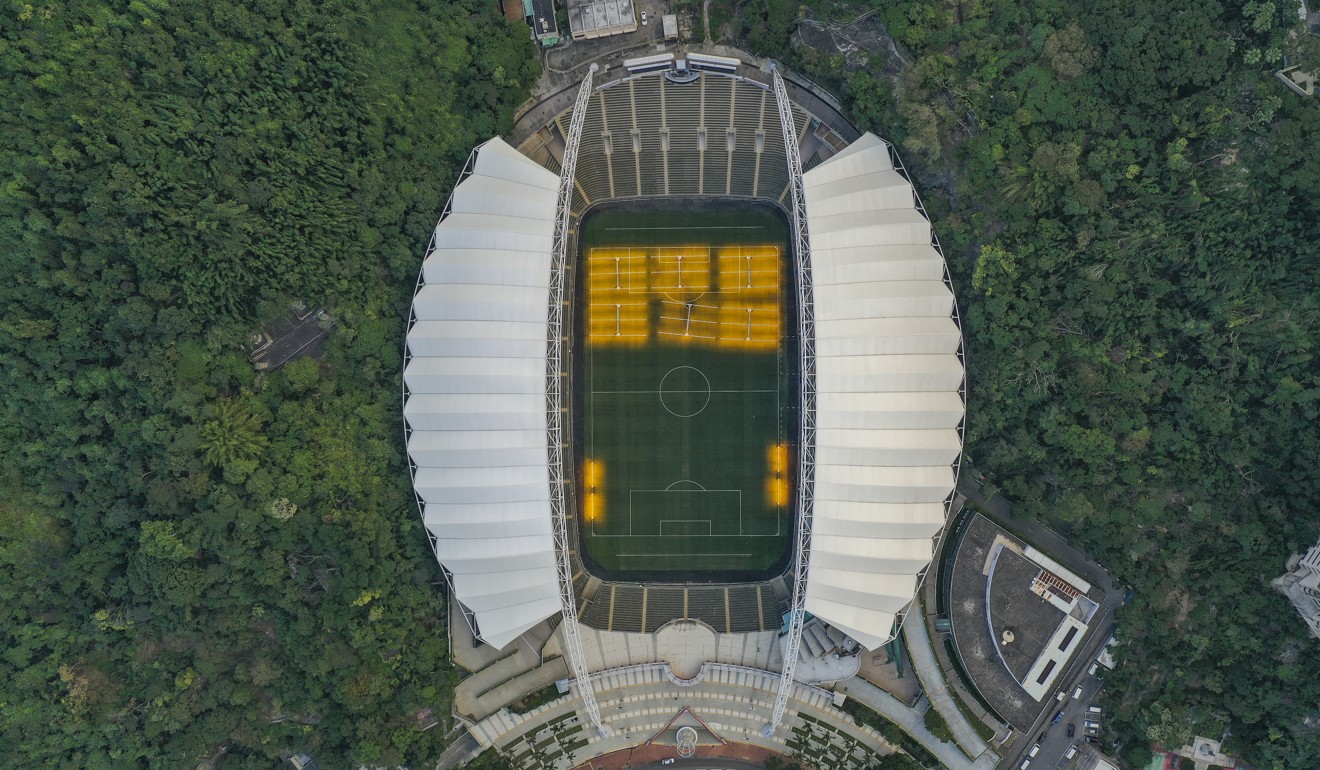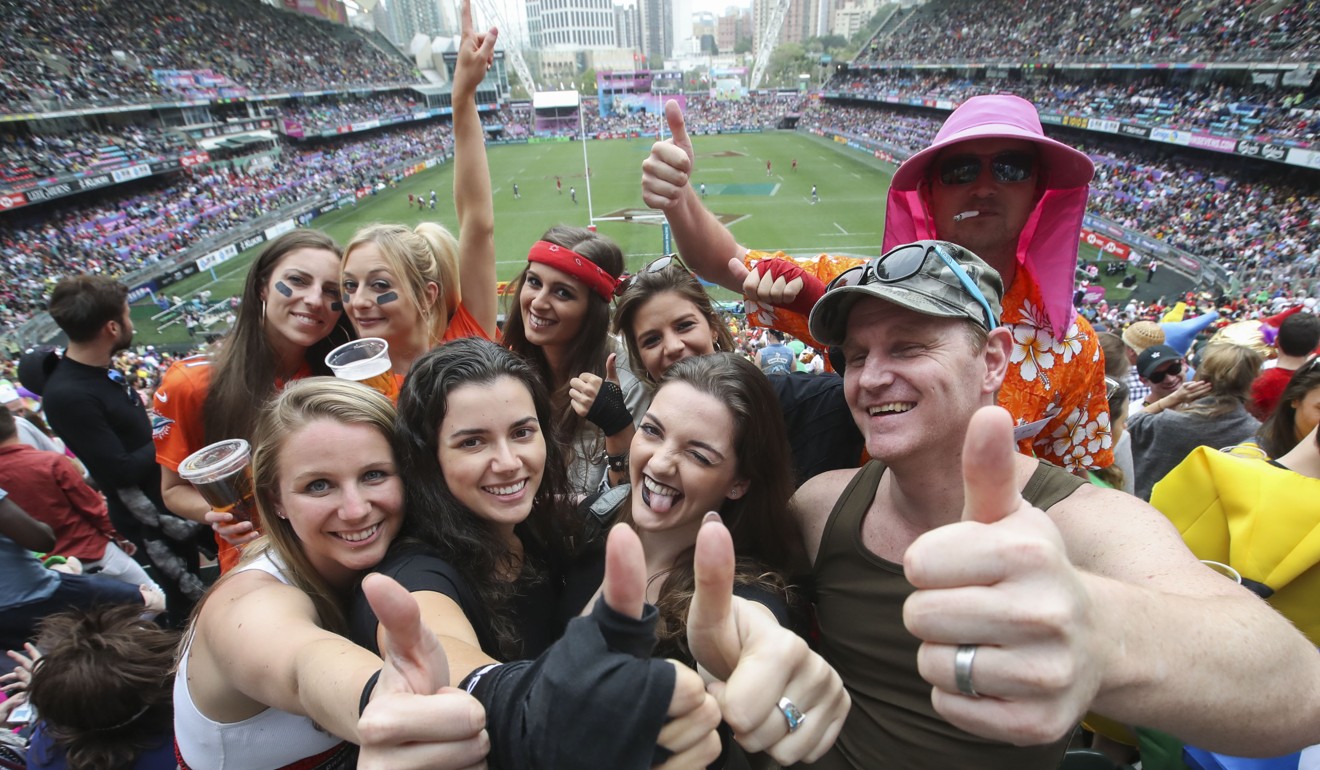
Hong Kong’s biggest sports stadium to have capacity drastically reduced as part of government conversion plan
- Government proposes to convert Hong Kong Stadium, capacity 40,000, into an 8,000-9,000-seater public sports ground
- The stadium’s purpose will largely be supplanted by the new arena at Kai Tak Sports Park, expected to be completed by 2023
Hong Kong Stadium will have around 80 per cent of its 40,000 seats removed as part of a government proposal to redevelop the stadium as a public sports ground.
The proposal drafted by the Leisure and Cultural Services Department noted that the move was partly because a HK$30 billion sports park to be built at the former Kai Tak airport will have a main stadium with 50,000 seats, which, as well as being bigger, will largely fulfil the same function.
The paper will be discussed in a meeting at Wan Chai District Council next Tuesday.
“Large sporting events that are currently held at the stadium will in future be held at the Kai Tak Sports Park,” the department said in the paper, and expected this would largely lower the usage of the existing stadium. Hong Kong Stadium, located at So Kon Po on Hong Kong Island, does not currently have an athletics track to serve as a public sports ground to meet the needs of the local community.
The department also noted that the four existing sports grounds on Hong Kong Island, which serve 1.1 million people exceeded the standard of one sports ground serving 200,000 to 250,000 people as suggested by a government guideline.
New World wins right to build and run HK$30 billion Kai Tak Sports Park

“The government should consider the long-term use of the stadium to make full use of it,” the department said, noting that finding land on the dense island to build a new sports ground was very difficult.
“We propose to transform the Hong Kong Stadium into a public sports ground, ” it said in the paper, suggesting that natural turf pitches for football and rugby and facilities suitable for international athletics competitions be built. The sports facilities will be open for bookings and members of the public can use the facilities for jogging for free.
The department suggested building a spectator stand with capacity of 8,000 to 9,000 seats instead of the current 40,000, affiliated facilities such as multi-purpose conference rooms, a media centre, and a car park of no less than the current capacity of 50 places for private cars and motorcycles.
The department also said it had got support from sports associations including the Hong Kong Football Association, the Hong Kong Rugby Union, the Hong Kong Amateur Athletic Association and the Hong Kong Schools Sports Federation.
Kitchee training centre and Siu Sai Wan stadium bear brunt of Mangkhut damage

“I think it’s a rational plan to transform the stadium’s use because the stadium in Kai Tak will be able provide 50,000 seats,” Pui Kwan-kay, vice-chairman of the Hong Kong Football Association. He pointed out that the timeline of the constructions should be managed well to make sure either the stadium or Kai Tak Sports Park – to be completed by 2023 – will be available to host large sporting events at any given time.
Pui said redeveloping the stadium with a smaller capacity would help the association save costs when booking the venue for less prestigious matches, for which it is currently too big.
The stadium is used for domestic and international soccer matches and for the annual Hong Kong Sevens rugby tournament. It has rarely been used for concerts because of objections to noise by residents.
HKFA given venues despite repeated anthem protests

Yolanda Ng Yuen-ting, a member of Wan Chai District Council, said she understood the government’s reasoning for converting the stadium into a public sports ground as there is public demand for it. But she stressed that she would not support if the government would use it as a replacement to demolish the Wan Chai Sports Ground, which was spared demolition for a government development plan in 2017. “It cannot be a trade-off for tearing down the Wan Chai Sports Ground,” she said, adding that the surrounding transport facilities should also be improved to meet the redevelopment.

In 2012, former Secretary for Home Affairs Tsang Tak-sing said the stadium could replace the function of Wan Chai Sports Ground when the Kai Tak sports complex was completed.
In 2017, the government said in its policy address that it would commence a feasibility study for the proposal to redevelop the stadium into a sports ground, but it has not given any timetable on the redevelopment. The stadium, rebuilt in 1994, is the city’s largest sports arena, with a capacity of 40,000.
Additional reporting by Chan Kin-wa
